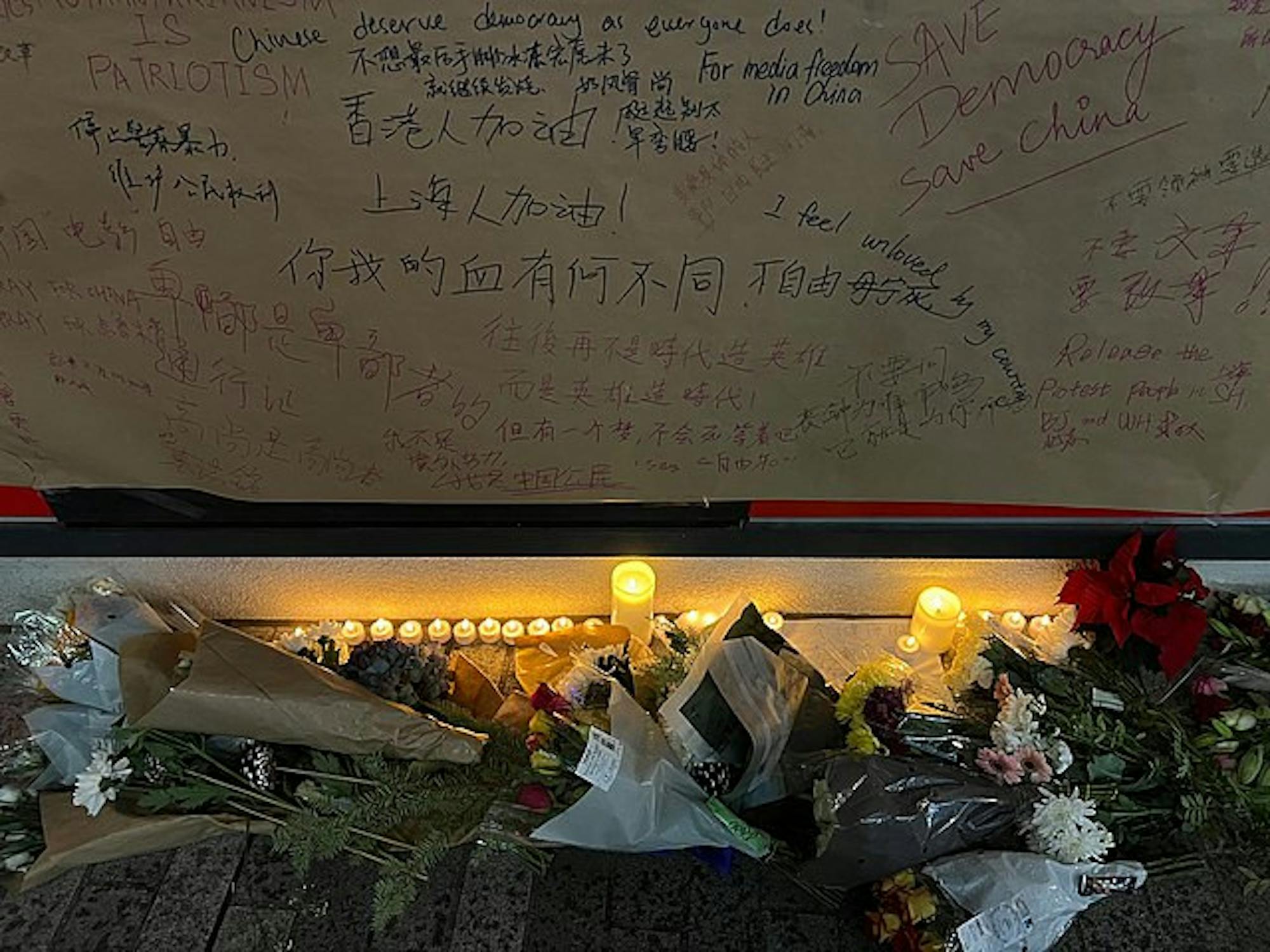On Sunday, Nov. 27, a rare anti-lockdown, pro-free speech protest broke out in Beijing. Demonstrators crowded the Liangmaqiao diplomatic district, holding up pieces of blank, white paper to show their opposition to China’s draconian zero-COVID policy. Protests also broke out in other major Chinese cities such as Shanghai, Guangzhou and Chengdu following a fire in Urumqi, the capital of Xinjiang, where at least 10 lives were lost due to COVID-19-related “barricades and locked doors” that slowed down the fire evacuation.
Having lived in Beijing, a city patrolled by censorship and surveillance, for my whole life, it feels surreal to me that protests could happen in a place I had always passed by. In order to go to my favorite shopping center in middle school or to visit my friends in the Liangmaqiao Diplomatic Compound, I often went past the Liangmaqiao Bridge. Earlier this year, when the local government shut down all the restaurants and entertainment venues as part of tightened COVID-19 regulations, a walk along the Liangmaqiao Bridge or a late night swim down the Liangmaqiao river became our only form of entertainment.
This area is all too familiar to me, but I would never have imagined it would become the heart of protests for change and openness in a country where marching the street feels like chasing a mirage.
When videos and pictures of the protests first flooded my feed, my heart was filled with mixed feelings of fear and uncertainty, as well as pride and joy. Knowing China’s history of exerting violence to suppress dissidents, I am terrified about the danger these brave demonstrators are faced with. But at the same time, this protest finally brought forth a possibility for a better China. Being able to see shared grievances displayed in public, I was finally able to let out a sigh of relief.
While the excitement surrounding these protests is overwhelming, the future is highly unpredictable. It is possible that the local government further increases censorship measures — already, journalists have reported that some stationary companies have limited the sale of white printing paper in response to the white paper protests. Other reports have revealed that local police in Shanghai have begun surveilling citizens’ phones in search of western social media apps like Twitter and Instagram in the aftermath of the demonstrations.
However, the Chinese government should be aware of the repercussions that may ensue from tightening censorship measures. I believe that doing so may intensify public discontent, which could undermine the entire regime and put China’s global image at serious risk. The people have not yet demanded full-scale regime change despite wishful pro-democracy thinking, but if suppression worsens, existing grievances could quickly escalate.
It is difficult to gauge how much power these protests can really exert; due to the decentralized nature of this movement, there is no leading figure among the protestors. Considering China’s historical success in silencing diverging political voices, it is almost impossible for a single individual to stand out as a prominent dissident. It’s hard not to be engulfed in pessimism when even plain white papers have become the target of censorship.
Nevertheless, this swirl of rage could drive future change in China. Although it won’t happen overnight, this new wave of protests confirms collective resentment of authoritarian policies and has sowed the seeds for a new vision of free speech and civil disobedience.
Chinese people are going through a critical moment in history. What we need most right now is greater public awareness of this newly-spawned revolutionary force, and support for these protests. Some may scoff at the white paper movement, dismissing it as illegitimate or cowardly. But in a country where free speech is highly constrained, not speaking in the first place is the only way not to be silenced. Chinese people have come a long way to make protests like these possible. The collective effort of Chinese students participating in rallies all across the world — from Tokyo to Amsterdam to London to New York City — is a manifestation of solidarity. The least we can do is support any effort being undertaken by these brave Chinese demonstrators who merely wish for a freer country for the people.
Watching from abroad as everything unfolds at home is difficult, and it only makes me want to go home even more. However, I don’t even know when I can next expect to return. The best I can do is write about these events from 6,700 miles away and tell stories about Liangmaqiao to my family and friends in Beijing who live right by the protests. When I did, they reacted with complete shock and surprise. Though news coverage of the protests is widely available in the United States, the Chinese censors are working away to eradicate any mentions in the Chinese media ecosystem.






